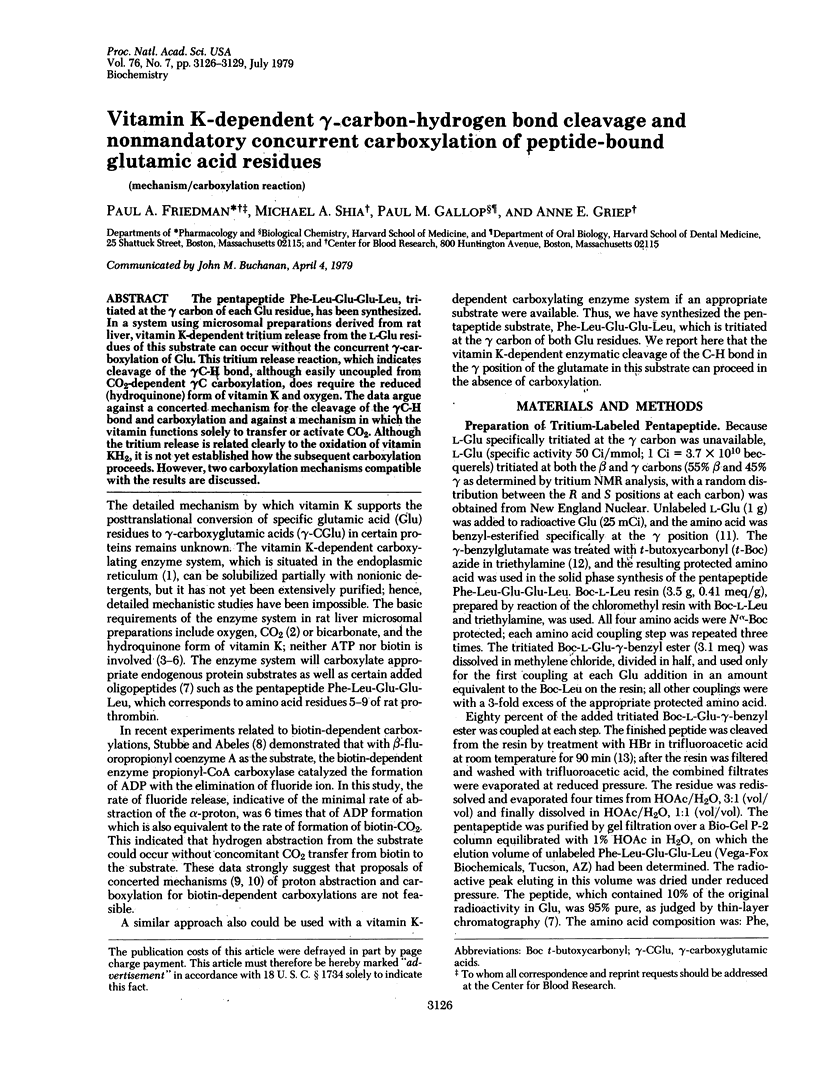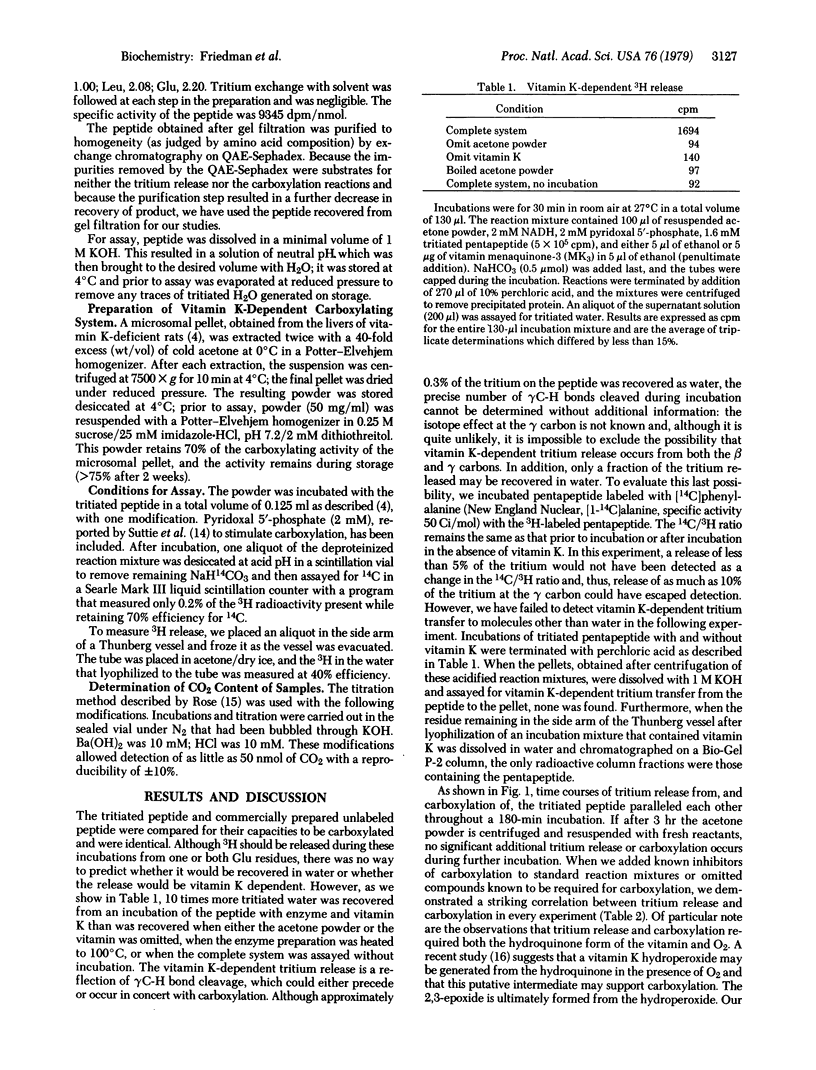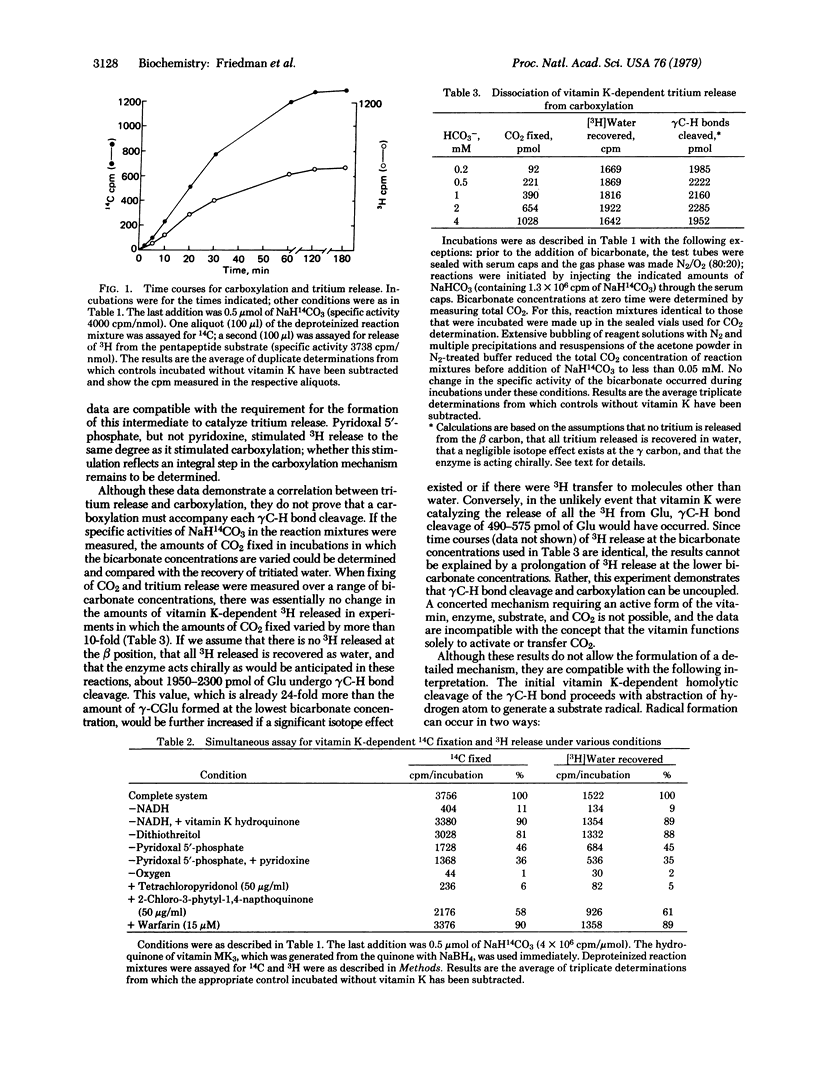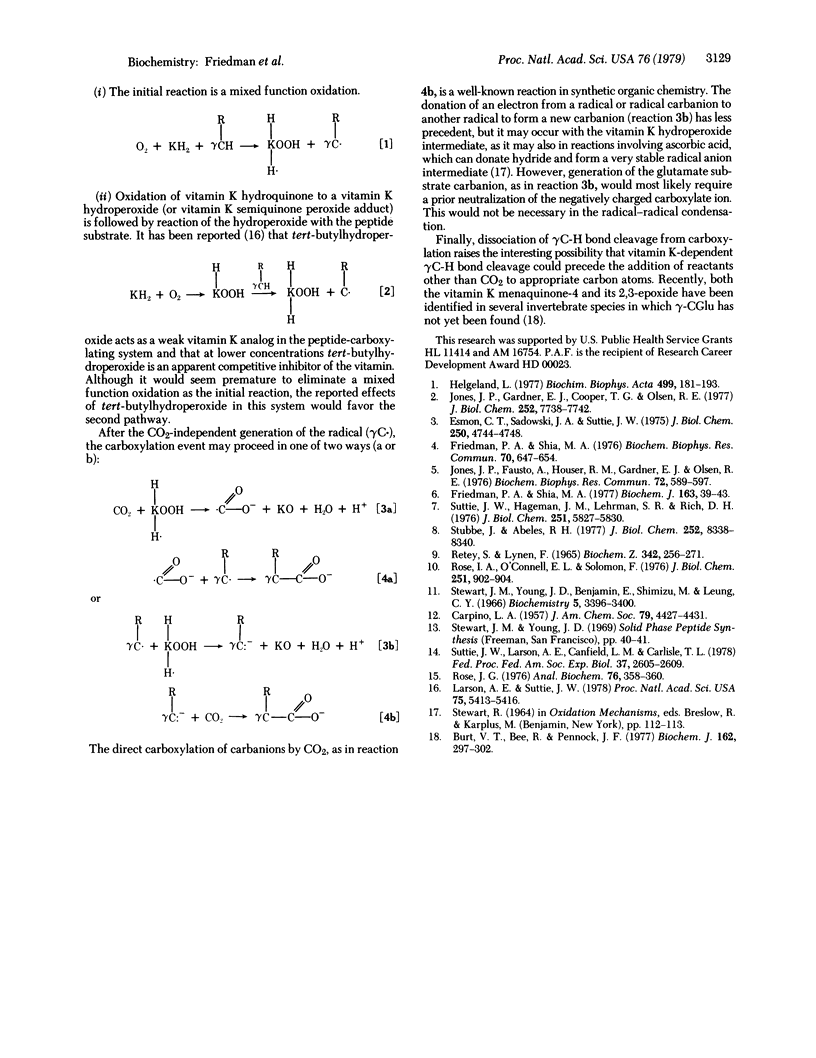Abstract
The pentapeptide Phe-Leu-Glu-Glu-Leu, tritiated at the gamma carbon of each Glu residue, has been synthesized. In a system using microsomal preparations derived from rat liver, vitamin K-dependent tritium release from the L-Glu residues of this substrate can occur without the concurrent gamma-carboxylation of Glu. This tritium release reaction, which indicates cleavage of the gamma C-H bond, although easily uncoupled from CO2-dependent gamma C carboxylation, does require the reduced (hydroquinone) form of vitamin K and oxygen. The data argue against a concerted mechanism for the cleavage of the gamma C-H bond and carboxylation and against a mechanism in which the vitamin functions solely to transfer or activate CO2. Although the tritium release is related clearly to the oxidation of vitamin KH2, it is not yet established how the subsequent carboxylation proceeds. However, two carboxylation mechanisms compatible with the results are discussed.
Full text
PDF



Selected References
These references are in PubMed. This may not be the complete list of references from this article.
- Burt V. T., Bee E., Pennock J. F. The formation of menaquinone-4 (vitamin K) and its oxide in some marine invertebrates. Biochem J. 1977 Feb 15;162(2):297–302. doi: 10.1042/bj1620297. [DOI] [PMC free article] [PubMed] [Google Scholar]
- Esmon C. T., Sadowski J. A., Suttie J. W. A new carboxylation reaction. The vitamin K-dependent incorporation of H-14-CO3- into prothrombin. J Biol Chem. 1975 Jun 25;250(12):4744–4748. [PubMed] [Google Scholar]
- Friedman P. A., Shia M. A. The apparent absence of involvement of biotin in the vitamin K-dependent carboxylation of glutamic acid residues of proteins. Biochem J. 1977 Apr 1;163(1):39–43. doi: 10.1042/bj1630039. [DOI] [PMC free article] [PubMed] [Google Scholar]
- Friedman P. A., Shia M. Some characteristics of a vitamin K-dependent carboxylating system from rat liver microsomes. Biochem Biophys Res Commun. 1976 May 17;70(2):647–654. doi: 10.1016/0006-291x(76)91096-2. [DOI] [PubMed] [Google Scholar]
- Helgeland L. The submicrosomal site for the conversion of prothrombin precursor to biologically active prothrombin in rat liver. Biochim Biophys Acta. 1977 Sep 29;499(2):181–193. doi: 10.1016/0304-4165(77)90001-0. [DOI] [PubMed] [Google Scholar]
- Jones J. P., Fausto A., Houser R. M., Gardner E. J., Olson R. E. Effect of vitamin K homologues on the conversion of preprothrombin to prothrombin in rat liver microsomes. Biochem Biophys Res Commun. 1976 Sep 20;72(2):589–597. doi: 10.1016/s0006-291x(76)80081-2. [DOI] [PubMed] [Google Scholar]
- Jones J. P., Gardner E. J., Cooper T. G., Olson R. E. Vitamin K-dependent carboxylation of peptide-bound glutamate. The active species of "CO2" utilized by the membrane-bound preprothrombin carboxylase. J Biol Chem. 1977 Nov 10;252(21):7738–7742. [PubMed] [Google Scholar]
- Larson A. E., Suttie J. W. Vitamin K-dependent carboxylase: evidence for a hydroperoxide intermediate in the reaction. Proc Natl Acad Sci U S A. 1978 Nov;75(11):5413–5416. doi: 10.1073/pnas.75.11.5413. [DOI] [PMC free article] [PubMed] [Google Scholar]
- Rose I. A., O'Connell E. L., Solomon F. Intermolecular tritium transfer in the transcarboxylase reaction. J Biol Chem. 1976 Feb 10;251(3):902–904. [PubMed] [Google Scholar]
- Rose J. G. The determination of total blood CO2 and its specific radioactivity in 0.2-milliliter blood samples. Anal Biochem. 1976 Nov;76(50):358–360. doi: 10.1016/0003-2697(76)90294-3. [DOI] [PubMed] [Google Scholar]
- Rétey J., Lynen F. Zur biochemischen Funktion des Biotins. IX. Der sterische Verlauf der Carboxylierung von Propionyl-CoA. Biochem Z. 1965 Aug 6;342(3):256–271. [PubMed] [Google Scholar]
- Stewart J. M., Young J. D., Benjamini E., Shimizu M., Leung C. Y. Immunochemical studies on tobacco mosaic virus protein. IV. The automated solid-phase synthesis of a decapeptide of tobacco mosaic virus protein and its reaction with antibodies to the whole protein. Biochemistry. 1966 Nov;5(11):3396–3400. doi: 10.1021/bi00875a002. [DOI] [PubMed] [Google Scholar]
- Stubbe J., Abeles R. H. Biotin carboxylations--concerted or not concerted? That is the question! J Biol Chem. 1977 Dec 10;252(23):8338–8340. [PubMed] [Google Scholar]
- Suttie J. W., Hageman J. M. Vitamin K-dependent carboxylase. Development of a peptide substrate. J Biol Chem. 1976 Sep 25;251(18):5827–5830. [PubMed] [Google Scholar]
- Suttie J. W., Larson A. E., Canfield L. M., Carlisle T. L. Relationship between vitamin K-dependent carboxylation and vitamin K epoxidation. Fed Proc. 1978 Oct;37(12):2605–2609. [PubMed] [Google Scholar]


